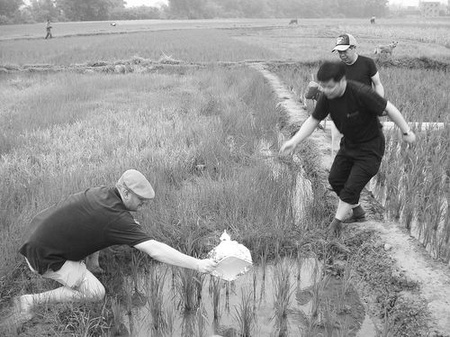An Aberdeen scientist who was the first to reveal the extent of arsenic contamination in rice is now officially regarded as one of the world’s leading experts in his field.
A paper published by Professor Andy Meharg - whose work is helping to inform policymakers to develop health guidelines - is one of the most ‘cited’ or referred to by other scientists conducting similar research.
The finding was made by Thomson Reuters which analyses how often scientist cite other researchers’ work.
The paper written by the University of Aberdeen biochemist - that has sparked all the interest - was the first to reveal the extent of the problem of arsenic contamination in rice grown in paddy fields in many parts of Asia.
The research found that the problem is caused by natural levels of arsenic in the soil, which is exacerbated when the fields are irrigated with groundwater already polluted with arsenic, from base and precious metal mining, and from the use of municipal solid waste as fertiliser.
Professor Meharg said: “I had a long history of studying the physiology of arsenic metabolism in wild plants but I started researching rice when a PhD student I was supervising came from Bangladesh to the University of Aberdeen to study arsenic in rice.
“He had realised that problems may be occurring due to the practice of irrigating rice with arsenic contaminated tubewell water.
“Once we started to look into arsenic in rice – the dietary staple of half the world - we realised that this was a major problem with people being exposed to the carcinogen through their diet.”
Professor Meharg and his collaborators have published many papers into the problem and his research, in part, is forming the basis for legislators and regulators evaluating the risk of arsenic from rice.
The researcher, whose paper was funded by the Biotechnology and Biological Sciences Research Council which has also given Professor Meharg a grant to investigate how to reduce arsenic in rice, added: “Advice to consumers who eat a lot of rice is to increase the contribution from other grains such as wheat, oats, barley and millet and to source rice from regions known to be low in arsenic such as Egyptian short grain and Himalayan Basmati rice.”


